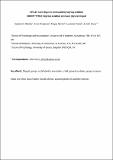Files in this item
Core disgust is attenuated by ingroup relations
Item metadata
| dc.contributor.author | Reicher, Stephen David | |
| dc.contributor.author | Templeton, Anne | |
| dc.contributor.author | Neville, Fergus Gilmour | |
| dc.contributor.author | Ferrari, Lucienne | |
| dc.contributor.author | Drury, John | |
| dc.date.accessioned | 2016-08-22T23:33:38Z | |
| dc.date.available | 2016-08-22T23:33:38Z | |
| dc.date.issued | 2016-03-08 | |
| dc.identifier | 240565859 | |
| dc.identifier | f332aa05-b163-4b2b-bf3a-3dfb0e6a4901 | |
| dc.identifier | 84960882389 | |
| dc.identifier | 000372013300032 | |
| dc.identifier | 26903640 | |
| dc.identifier.citation | Reicher , S D , Templeton , A , Neville , F G , Ferrari , L & Drury , J 2016 , ' Core disgust is attenuated by ingroup relations ' , Proceedings of the National Academy of Sciences of the United States of America , vol. 113 , no. 10 , pp. 2631-2635 . https://doi.org/10.1073/pnas.1517027113 | en |
| dc.identifier.issn | 0027-8424 | |
| dc.identifier.other | ORCID: /0000-0001-7377-4507/work/57568376 | |
| dc.identifier.uri | https://hdl.handle.net/10023/9359 | |
| dc.description.abstract | We present the first experimental evidence to our knowledge that ingroup relations attenuate core disgust and that this helps explain the ability of groups to coact. In study 1, 45 student participants smelled a sweaty t-shirt bearing the logo of another university, with either their student identity (ingroup condition), their specific university identity (outgroup condition), or their personal identity (interpersonal condition) made salient. Self-reported disgust was lower in the ingroup condition than in the other conditions, and disgust mediated the relationship between condition and willingness to interact with target. In study 2, 90 student participants smelled a sweaty target t-shirt bearing either the logo of their own university, another university, or no logo, with either their student identity or their specific university identity made salient. Walking time to wash hands and pumps of soap indicated that disgust was lower where the relationship between participant and target was ingroup rather than outgroup or ambivalent (no logo). | |
| dc.format.extent | 356265 | |
| dc.language.iso | eng | |
| dc.relation.ispartof | Proceedings of the National Academy of Sciences of the United States of America | en |
| dc.subject | Disgust | en |
| dc.subject | Social identity | en |
| dc.subject | Groups | en |
| dc.subject | Group processes | en |
| dc.subject | Coaction | en |
| dc.subject | BF Psychology | en |
| dc.subject | RA Public aspects of medicine | en |
| dc.subject | RC0321 Neuroscience. Biological psychiatry. Neuropsychiatry | en |
| dc.subject | RJ Pediatrics | en |
| dc.subject | NDAS | en |
| dc.subject | BDC | en |
| dc.subject | R2C | en |
| dc.subject.lcc | BF | en |
| dc.subject.lcc | RA | en |
| dc.subject.lcc | RC0321 | en |
| dc.subject.lcc | RJ | en |
| dc.title | Core disgust is attenuated by ingroup relations | en |
| dc.type | Journal article | en |
| dc.contributor.institution | University of St Andrews. School of Psychology and Neuroscience | en |
| dc.contributor.institution | University of St Andrews. St Andrews Sustainability Institute | en |
| dc.contributor.institution | University of St Andrews. School of Medicine | en |
| dc.contributor.institution | University of St Andrews. Public Health Group | en |
| dc.identifier.doi | https://doi.org/10.1073/pnas.1517027113 | |
| dc.description.status | Peer reviewed | en |
| dc.date.embargoedUntil | 2016-08-22 |
This item appears in the following Collection(s)
Items in the St Andrews Research Repository are protected by copyright, with all rights reserved, unless otherwise indicated.

